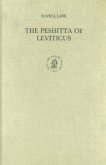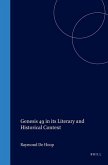This study explores the vocabulary employed in the extant text of Leviticus. The chosen methodology of rhetorical analysis (with particular emphasis upon terminological patterns) shows a carefully composed text. The basic working hypothesis that Leviticus has been artistically structured around 37 divine speeches "'and the Lord spoke/said to Moses (and Aaron)' . With chapter 16 as its possible structural and theological center has been substantiated both on the microstructural and macrostructural levels. The plethora of significant micro- and macrostructural terminological patterns, suggests original literary cohesiveness and hence single-handed authorship. These findings are of special significance regarding so-called "P" and "H" passages, a "layer of priestly reworking," and, even more, the exegesis and theology of Leviticus.








